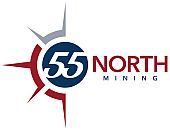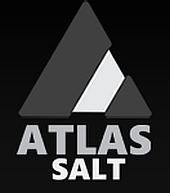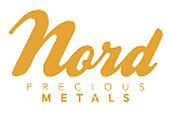 Appia drills 3.15 m of 0.032 wt % U3O8 at Loranger
Appia drills 3.15 m of 0.032 wt % U3O8 at Loranger
2019-06-18 09:53 ET – News Release
Mr. Tom Drivas reports
APPIA IDENTIFIES 900 METER-LONG URANIUM MINERALIZATION TREND ON THE LORANGER PROPERTY
Appia Energy Corp. has released the assay results from the completed diamond drill program on the Loranger property. The property is located 28 kilometres southeast of Cameco’s Rabbit Lake mill in the Athabasca basin in Northern Saskatchewan.
Highlights of the winter drilling include 3.15 metres of 0.032 weight per cent U3O8 (triuranium octoxide) at 96.75-metre drill hole depth in hole LOR-19-03 and 0.7 metre grading 0.066 weight per cent U3O8 at 105.5-metre drill hole depth in hole LOR-19-02. U3O8 assay results for the drill holes are presented the attached table. A total of 1,063 metres were completed in eight drill holes covering three target areas.
James Sykes, Appia’s vice-president, exploration and development, commented: “We are pleased with the drill results. First, we’ve confirmed uranium mineralization in two target areas and especially the drill holes within target area 2 (LOR-19-01 to LOR-19-04A), a 900-metre-long area, all intersected uranium mineralization. Second, we observed uranium depletion associated with a massive hydrothermal fluid fault network system encountered in target area 1 (LOR-19-07A and LOR-19-08), indicating uranium has been mobilized and potentially redeposited somewhere along the structural trends. Third, the uranium mineralization drill hole assay results mostly correlate with hydrothermal alteration styles and remobilized ductile/brittle structural zones encountered in both target areas. In particular, we observe redox fronts (hematite plus or minus limonite with bleaching) showing elemental ratios (Up/Ut, Tht/Ut, Pb206/Pb204) typical of uranium fluid pathways. Fourth, boron (a uranium pathfinder element) is commonly elevated (i.e. [over] 100 [parts per million] and at least more than twice the background) in the remobilized graphitic/carbonaceous material ductile/brittle structural zones, with drill hole LOR-19-08 exhibiting the highest concentrations of boron (121 to 263 ppm B).”
Together with the 2017 program, the company has tested only five of the 22 previously identified gravity low targets and covered only 2.3 kilometres of the 94.0 total kilometres of conductive strike length, with a cumulative total of 15 drill holes and 2,524 total metres drilled. The company plans to continue exploring the property with diamond drilling, ground gravity geophysics and ground radiometric prospecting in combination with geological mapping.
Split core samples were taken over 0.1-metre to 1.2-metre core lengths covering scintillometer readings, hydrothermal alteration and ductile/brittle structures. All the drill core samples were shipped from the project site and hand delivered to the Saskatchewan Research Council’s (SRC) geoanalytical laboratory in Saskatoon, Sask.
Geochemical assay results were provided by SRC’s geoanalytical laboratory, an ISO/IEC 17025:2005-certified (CAN-P-4E) laboratory in Saskatoon, Sask., for multielement analysis using the ICPMS and boron lab packages. All reported values were provided from SRC as uranium (parts per million) and were converted to U3O8 (weight per cent) by Appia using a conversion factor of 1.1792 divided by 10,000.
All geochemical results reported herein have passed rigorous internal quality assurance/quality control review and compilation. The technical content in this news release was reviewed and approved by Dr. Irvine R. Annesley, PGeo, adviser to the board of directors of Appia and a qualified person as defined by National Instrument 43-101.
About Appia Energy Corp.
Appia is a Canadian publicly traded company in the uranium and rare earth element sectors. The company is currently focusing on delineating high-grade critical rare earth elements (REE) and uranium on the Alces Lake property as well as prospecting for high-grade uranium in the prolific Athabasca basin on its Loranger, North Wollaston and Eastside properties. The company holds the surface rights to exploration for 61,364 hectares (151,633 acres) in Saskatchewan.
LORANGER PROJECT -- WINTER 2019 DRILL HOLE U3O8 ASSAY RESULTS
DDH Target area From To Interval Vertical U3O8
(m) (m) (m) depth (m) (wt %)
LOR-19-01 2 55.15 55.30 0.15 48.16 0.011
59.50 59.75 0.25 51.84 0.012
Composite total 0.40 0.012
LOR-19-02 2 87.90 88.55 0.65 77.15 0.037
105.50 106.20 0.70 92.58 0.066
115.50 115.85 0.35 101.54 0.023
Composite total 1.70 0.046
LOR-19-03 2 82.45 82.65 0.20 71.58 0.014
96.75 99.90 3.15 84.30 0.032
102.95 104.05 1.10 89.30 0.040
108.60 109.05 0.45 94.30 0.085
Composite total 4.90 0.038
LOR-19-04 2 Hole abandoned in overburden, restarted as LOR-19-04A
LOR-19-04A 2 63.20 63.40 0.20 54.48 0.017
72.70 73.00 0.30 62.55 0.010
78.95 79.05 0.10 67.87 0.012
80.20 80.30 0.10 68.97 0.028
83.45 83.80 0.35 71.45 0.012
85.45 85.55 0.10 73.37 0.017
Composite total 1.15 0.014
LOR-19-05 3 Hole abandoned in overburden,not restarted
LOR-19-06 3 No significant results
LOR-19-07 1 Hole abandoned in overburden, restarted as LOR-19-07
LOR-19-07A 1 No significant results
LOR-19-08 1 133.25 133.50 0.25 91.99 0.011
148.85 150.00 1.15 103.04 0.020
Composite total 1.40 0.018
Notes:
Cut-off grade is 0.01 per cent U3O8.
Maximum consecutive internal dilution is 2.0 metres downhole.
True widths have yet to be determined.
All uranium (ppm) results received by SRC from the ICP-MS total digestion lab package
were converted to U3O8 (weight per cent) using a conversion factor of
1.1792 divided by 10,000.
We seek Safe Harbor.




























